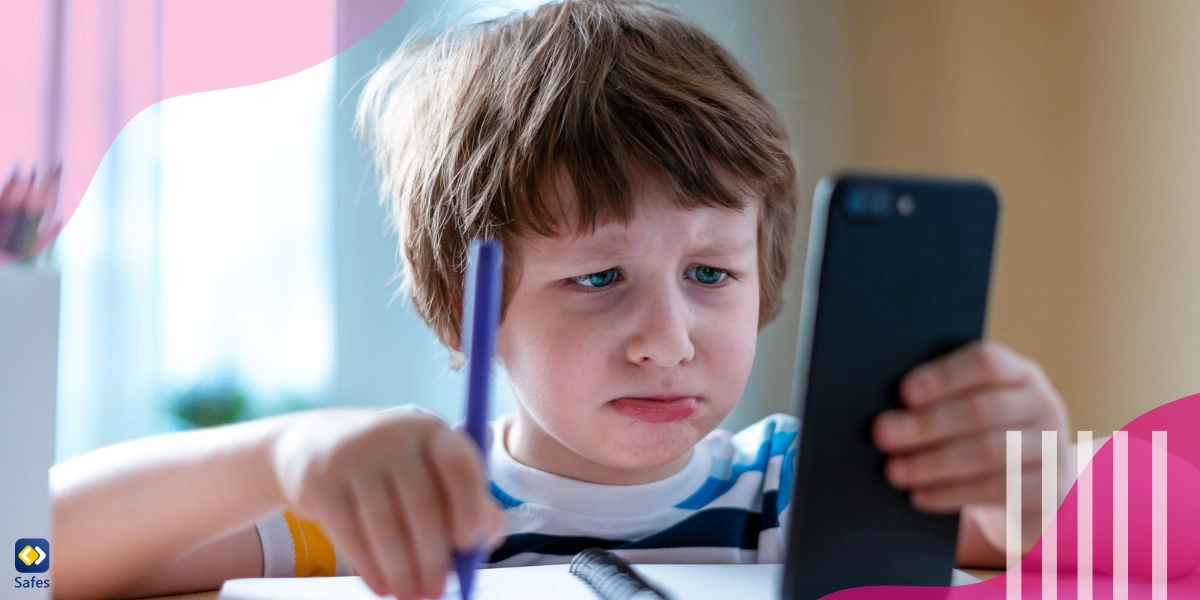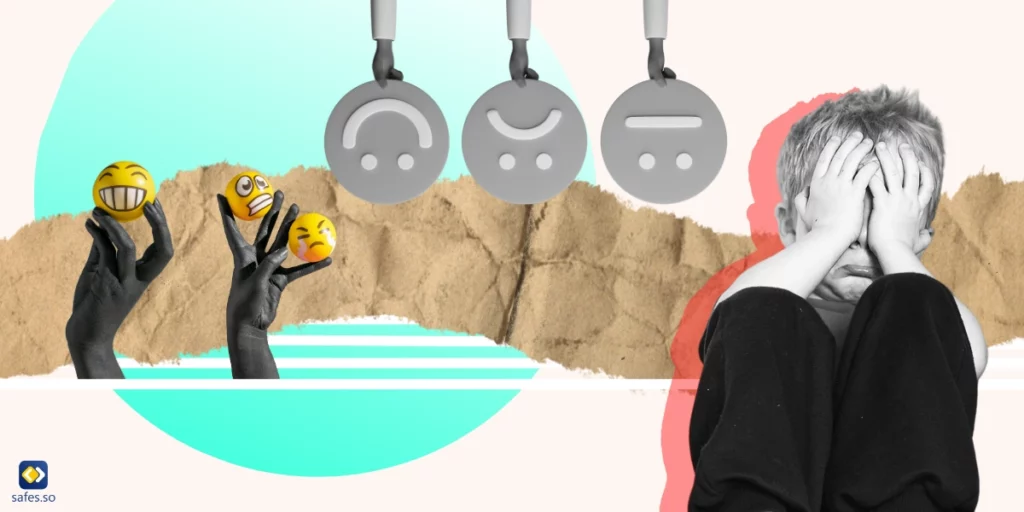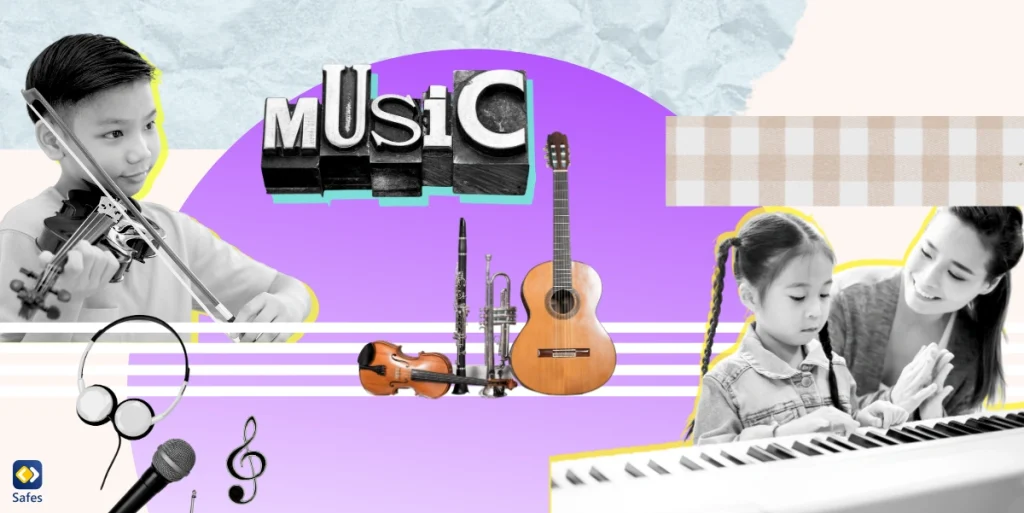Social media is the modern method of socialization that the majority of people use on a daily basis. Nowadays, children are exposed to social media platforms from birth. Their infancy photos are constantly shared by their parents, and as soon as they learn to hold objects, they’ll start to play with a smartphone. It won’t take long before they become active on social media themselves.
Download and Start Your Free Trial of the Safes Parental Control App
This constant obsession with social media, however, can’t be without an impact. In recent years, concerns have been raised among parents who ask this question: “Are attention spans getting shorter?” Many people nowadays believe that there’s a relationship between social media and attention span in children. If children’s attention span is truly being affected by social media use, it can have adverse consequences on their academic success and future lives. This means that parents should be more aware of the issue and take proactive measures to promote digital well-being in their families. This is exactly what this blog post aims to do: raise awareness on the relationship between social media use and attention span.
Understanding Attention Span
Before talking about the effect of social media on children’s attention span, let’s see what attention span is and how it can be affected by different stimuli.
Definition and Developmental Aspects of Attention Span in Children
The term “attention span” refers to the duration that a person can focus on a particular task without being distracted. Human beings have different attention spans in different stages of their lives. Essentially, a person’s attention span tends to lengthen as they age. According to Brain Balance, this is what a normal attention span should be based on age:
- 2 years old: four to six minutes
- 4 years old: eight to 12 minutes
- 6 years old: 12 to 18 minutes
- 8 years old: 16 to 24 minutes
- 10 years old: 20 to 30 minutes
- 12 years old: 24 to 36 minutes
- 14 years old: 28 to 42 minutes
- 16 years old: 32 to 48 minutes
Factors Affecting Attention Span in the Digital Era
Many factors can affect attention span in the digital era. While some studies believe that technology is not the only culprit here, many claim that it plays a significant role in the shortening of attention spans. However, based on how things look currently, it seems that technology is indeed affecting our attention spans in some way. A study indicates that while the younger generation can multitask easily, the older generation can focus more deeply on a single subject. The results of this study show how youth’s attention span has been affected in recent years.

The Role of Social Media in Attention Span Distraction
Social media is a modern technology that many people use frequently. Social media platforms strive to be highly engaging so that users spend a lot of time on them, infinitely scrolling and watching videos. These platforms can be a major source of distraction for children, as they’re highly addictive and can make concentrating on less dull activities harder.
The Social Media Landscape
How does social media affect attention span? To answer this question, first we should learn how social media works and what mechanisms make it so enthralling for users, especially for children.
Popular Social Media Platforms and Their Appeal to Children
There are several social media platforms that are popular among children. These platforms each offer features that are tailored to their users’ needs. For example, platforms such as Instagram and Snapchat are popular among teenagers due to their visual nature. On the other hand, platforms such as TikTok draw younger children because they have short videos that don’t need much focus and time.
The Allure of Instant Gratification and Endless Content
These platforms might have different characteristics, but they’re all designed in a way to prolong app usage time. They provoke a feeling of instant gratification in users through likes, comments, and shares. In other words, they create a kind of thirst for approval and positive feeling called dopamine seeking-reward loop, which makes users stay in the app for a long time. The endless stream of content further aggravates this situation, leading to prolonged screen time and a continuous search for novelty.
How Social Media Design Impacts User Engagement
The allure of social media goes beyond appearances. Social media platforms are equipped with complex algorithms that constantly analyze user interactions and behavior to estimate their preferences. These algorithms then show users content that is most likely interesting for them. This targeted content maximizes user engagement and leads to longer screen time.

Social Media’s Impact on Attention Span
Social media effects on attention span can happen due to various reasons. First, social media creates a culture of FOMO in children. FOMO, or Fear of Missing Out, is the constant feeling that others are having rewarding experiences, while the person under the influence of FOMO is missing out on all these opportunities. This leads to a compulsive need to return to social media platforms frequently to keep up with others.
Additionally, constant notifications from these platforms can disrupt children from concentrating on one task. The barrage of information can make them switch between tasks or attempt multitasking, which can impair attention and lead to poor academic performance.
Lastly, social media algorithms also have an adverse effect on sustaining attention. These algorithms are designed to retain users by offering content that is tailored to their preferences. This can increase user engagement and focus their attention on social media instead of more important activities.

Recognizing the Signs of Attention Span Issues
It’s important for parents to identify the signs of attention span issues for early intervention. These signs can take many forms. However, we have listed below some of the most important signs of attention span problems.
- Shortened attention span and difficulty focusing: A child with short attention span has difficulty concentrating on one task. This can be demonstrated in their inability to complete their homework or study continuously.
- Impulsivity and restlessness in everyday activities: The signs of short attention span can also manifest in everyday activities. Short attention span can bring about impulsive behaviors and frustration, which stem from the inability to properly focus on things.
- Academic performance and attention-related concerns: When a child has diminished attention span, it’s hard for them to pay attention in class or complete assignments. This can lead to lower grades and academic failure.
The Connection Between Social Media and Mental Health
The adverse effects of social media go beyond shortened attention span. While it can immensely help reduce feelings of loneliness in times of distress, research shows that excessive social media use can trigger the onset of mental health problems. An example of social media-induced mental health problems is anxiety and depression. Constant use of social media can trigger the development of a negative self-image, making children feel below par and anxious.
Excessive screen time can contribute to the development of other mental health issues, as well. Dependency on social media can disrupt children’s sleep patterns, leading to fatigue and irritancy. It can also expose children to cyberbullying and constant comparison with others, which cause low self-esteem.
Nurturing Healthy Attention Span Habits
To minimize the impact of social media on children’s attention span, implement these instructions in your parenting:
- Educate children about social media’s influence: Let your children know how excessive use of social media can impact their well-being and jeopardize their future success. This can help them understand the reason behind some limitations.
- Set boundaries and guidelines around screen time: Establishing clear rules and expectations around internet use can help foster discipline in the family. Make sure that these rules are fair and communicated clearly to children.
- Encourage mindfulness and offline activities: Let your children value the time spent off social media by encouraging them to participate in offline activities and setting time to relax and unwind. These activities include participating in sports, journaling, or reading books.
Parental Control Apps: Empowering Parents in the Digital Age
According to a popular saying, modern problems require modern solutions. Sometimes, you need a digital tool to combat the negative effects of the digital world. Parental control apps are tools that let you limit your children’s screen time, blocking access to different apps in specified intervals. This helps minimize distractions during study time and promotes better sleeping habits. These apps can also help you set appropriate filters and content restrictions, which will protect children from online dangers.
If you’re looking for a good parental control app, Safes is our suggestion, since it does all of the above and more. It also has an important advantage: being compatible with all devices, from Android and iOS to Windows. All you need to do is download the app and protect your children’s attention span from becoming shorter.
Explore how Safes can enhance your child’s online safety and digital well-being with our free trial. Start protecting them across all devices today.

Balancing Technology and Real-Life Interactions
To promote a healthy lifestyle, parents should strike a balance between technology use and having real-life interactions. Encourage children to make friends, have social interactions, and spend quality time with family. Also, set aside some time for outdoor activities and hobbies, as it allows them to explore their interests and realize that they don’t need to be glued to their screens all day long to have fun.
Another important thing that parents should do to balance technology and real life for their children is to nurture a healthy relationship with technology in them. Teach your children that the internet is a tool that can help facilitate life in many aspects rather than a constant source of entertainment. This can promote a mindful approach to using technology.
Leading by Example: Digital Role Modeling for Children
Children grow up observing their parents’ behavior and learning from them. Parents’ digital behavior is no exception to the rule: parents’ screen time has been shown to be strongly associated with children’s screen time. In other words, the more you spend time on your phone, the more likely it is for your child to do the same. By creating tech-free zones, prioritizing family time, and having regular and open communication about technology, you can foster healthy tech habits in your children.
Collaborating with Schools and Educational Institutions
Children spend the majority of their time at school. Therefore, educational institutions can provide valuable insights into children’s digital habits. Engaging in discussions about digital habits with educators and inquiring about schools’ digital learning strategies ensure a holistic approach to managing children’s digital behavior. By collaborating with each other, parents and schools can integrate technology into the educational program responsibly. This provides a breeding ground for teaching media literacy and digital citizenship to students. As a result, an environment will be created that supports children’s attention span development.
Conclusion
Given the presented social media attention span statistics, we now know how important it is to teach our children to use technology mindfully. Promoting awareness of the potential effects of social media and implementing healthy digital habits can lead to a more balanced digital lifestyle for children.
Parents, educators, and society as a whole share responsibility in supporting children’s attention span development amid the challenges of the digital age. As we navigate the digital landscape, it is essential to strike a balance between the benefits and challenges of social media. By recognizing the potential impact of technology on attention span and mental well-being, we can maximize its positive aspects while minimizing its adverse effects.
Your Child’s Online Safety Starts Here
Every parent today needs a solution to manage screen time and keep their child safe online.
Without the right tools, digital risks and excessive screen time can impact children's well-being. Safes helps parents set healthy boundaries, monitor activity, and protect kids from online dangers—all with an easy-to-use app.
Take control of your child’s digital world. Learn more about Safes or download the app to start your free trial today!
![Die Beziehung zwischen Social Media und Aufmerksamkeitsspanne] [Kind mit kurzer Aufmerksamkeitsspanne](https://www.safes.so/wp-content/uploads/2023/08/The-Relationship-Between-Social-Media-and-Attention-Span-1024x512.webp)



